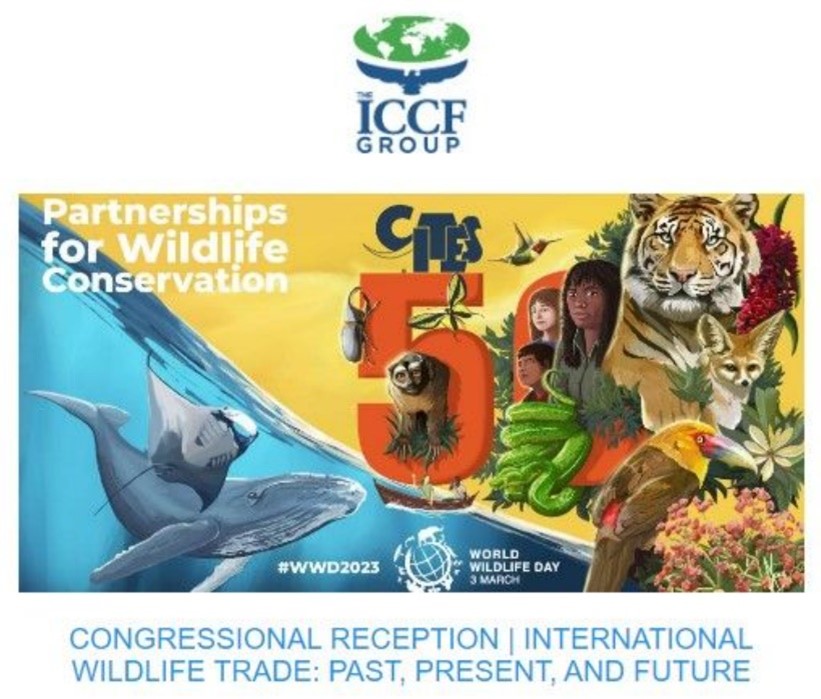
The International Institute for Sustainable Development’s (IISD) SDG Knowledge Hub recently invited a number of guest articles about the trade in wild species. John Scanlon (with co-authors) contributed a number of articles to explore the state of CITES 50 years after it was agreed.
Before taking a closer look at these articles it is worth noting some points on sustainability and the UN Sustainable Development Goals (SDGs), since the SDG Knowledge Hub is meant to be an online resource centre regarding the implementation of the United Nations’ 2030 Agenda for Sustainable Development and the SDGs.
Over recent decades, a plethora of global organisations have sprung up with a stated objective of creating a more sustainable world. From the IISD to the World Business Council for Sustainable Development (WBCSD) they all leave one thing out of the story, transparency. Sustainability without the corresponding transparency is an ideology and not a strategy. NGOs, businesses, PR agencies and consultants in this space have worked very hard to divert peoples’ attention away from the fact that without transparency, there is no proof of any sustainability statements. And let’s not forget that all the evidence is in the opposite direction, pointing to decades of unchecked overexploitation driving the looming extinction crisis.
As for the UN SDGs, a 2020 paper makes clear what the problem with the SDGs is in its title, The Sustainable Development Goals prioritize economic growth over sustainable resource use: a critical reflection on the SDGs from a socio‑ecological perspective. The paper goes on to conclude:
- The combination of neoliberal ideology, corporate lobbying, business-friendly fiscal policies, tax avoidance and evasion has led to the massive weakening of the public sector [read monitoring, regulation and prosecutions].
- Too much focus is put on efficiency improvements, rather than absolute reductions in resource use, even though such gains cannot compensate for growing economies. [Less unsustainable doesn’t equate to sustainable].
- Achieving the UN SDGs mainly relies on the same institutions currently responsible for unsustainable resource use. [read, can we really trust that they have changed?]
- Measures proposed for achieving the UN SDGs in part counteract the possibility of transformative change. [There are too many conflicts of interest.]
So, what happens when business-as-usual needs to look like it is something new? This is where we get to the art of making the right noise, it just has to sound plausible.
The 3rd of March (World Wildlife Day) is the 50th anniversary of the Convention on International Trade in Endangered Species of Wild Fauna and Flora (CITES). In Washington DC, on March 3, 1973, the CITES was opened to signatories, with the USA being the first country to sign up.
In the lead up to this CITES milestone, IISD has invited guest commentary on the convention past, present and future. Below is Nature Needs More’s response to each of the articles.


While the article looks at the pros and cons of the current CITES compliance mechanism, it fails to mention all the elephants in the room. The first elephant is that the trade system is not transparent. In a world where big data is seen as critical, CITES trade reporting is at 1970s standard: paper-based, no real-time data, no end-to-tracking. Given that off-the-shelf solutions are available to provide all of these, there is no excuse for this having not being achieved.
The article doesn’t mention that when CITES was set up it was mandated that a signatory country must have a management authority, to issue the permits needed to trade, but the CITES treaty doesn’t mandate an enforcement authority. Fifty years on, over 80 signatory countries don’t have a dedicated enforcement authority. It should come as no surprise that illegal trade is rampant.
Paper-permits, delayed reporting and no dedicated enforcement authority is the perfect storm that makes it laughably easy to launder illegal products into the legal supply chain.
Further, CITES trade suspensions are based on an out-of-date sanctions model – sanctioning governments, not businesses. Business doesn’t just fly under the radar, there is no effective radar. In parallel with the deregulation of the last 40 years, business takes an all profit, no responsibility approach to the trade in endangered and exotic species. Voluntary ‘compliance’ results in their glossy sustainability reports being meaningless. Most large businesses have no idea what is going on in their vast supply chains, they only care about products being delivered on time.
In addition, because CITES lacks a funding mechanism, developing countries are given no financial assistance to implement what amounts to policing highly complex trade regulations for the trade in 40,000 species.
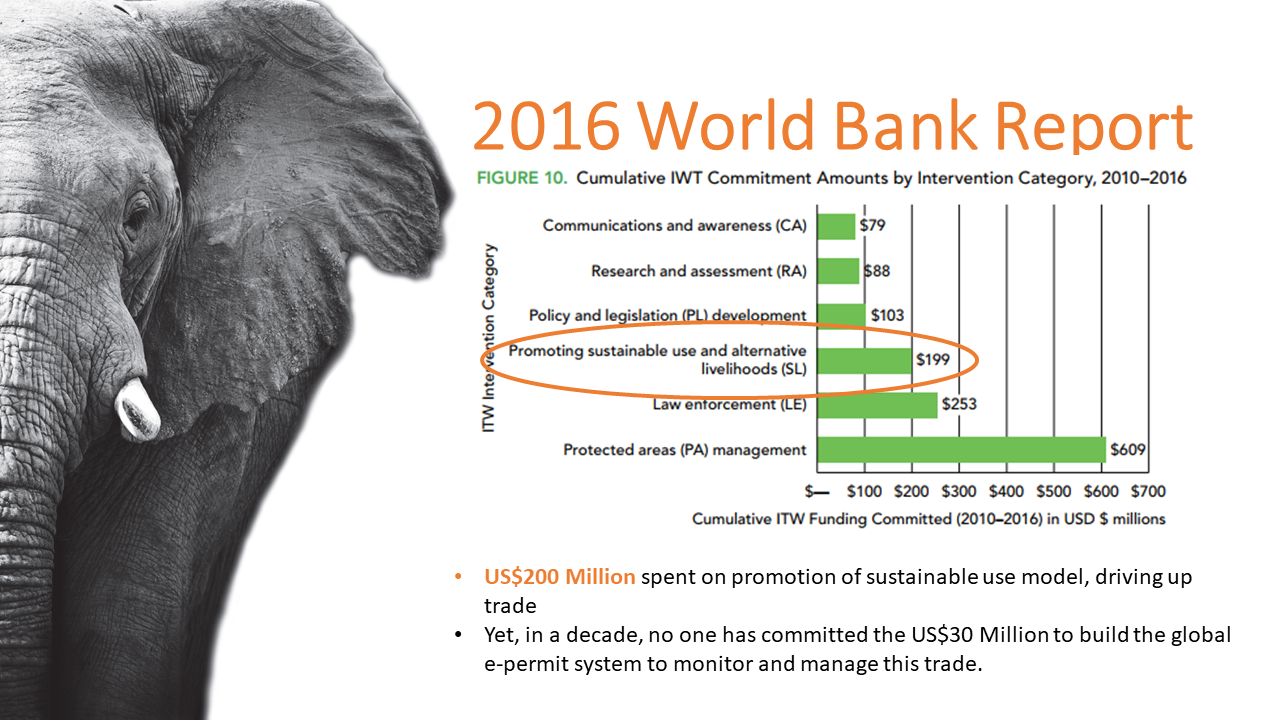
Instead of recapping the ongoing split-listing saga of African elephants, the authors should have highlighted that if CITES can’t manage the most iconic species it is meant to protect, this should have prompted a rethink on how the treaty operates.
Relying on recent ‘pledges’ for funding is not a strategy for regulating a luxury trade; the history of rich countries not honouring such pledges makes this frankly ridiculous. CITES had 50 years to change its funding model and could have taken steps to raise money from those who profit the most from the trade – businesses in the major import countries
Protecting wildlife under some sort of climate offset model is beyond stupid. There is too much evidence that these schemes do not reduce carbon emissions and they are designed for corporate greenwashing.
Until the current schemes are fixed and genuine, this this not the time to hand wildlife to business and investors and expand this greenwashing dilemma.
Undoubtedly, one of the reasons why several countries in continental Africa want to keep the elephant trade open is to deal with domestic poverty. Given the scale of biodiversity loss and the extinction crisis, this is not the time to push the legal trade in wild species as a path out of poverty. Poverty alleviation and the trade in wild species must be decoupled to stand a chance of saving what is left. There are a great number of NGOs, IGOs and government bodies already working on poverty alleviation and development aid. The World Bank and UNCTAD were created for this very purpose, not CITES.
Selling off the last remaining wild species to deal with poverty is disingenuous, when the cause of poverty is capital flight to secrecy jurisdictions. By the end of 2008, the combined external debt of sub-Saharan African countries was US$177 Billion, while between 1970 and 2008 the (capital flight and tax evasion) outflows from 33 sub-Sharan countries totalled US$944 Billion. I can only imagine the scale of capital flight and tax evasion since 2008!
So instead of being a net debtor to the world, sub-Saharan Africa has been a net creditor, over this timeframe, given the scale of capital flight and tax evasion that has flowed to the tax havens created by the West. Globally it is conservatively estimated that every year over US$1 trillion in capital flight and tax evasion flows out of developing countries.
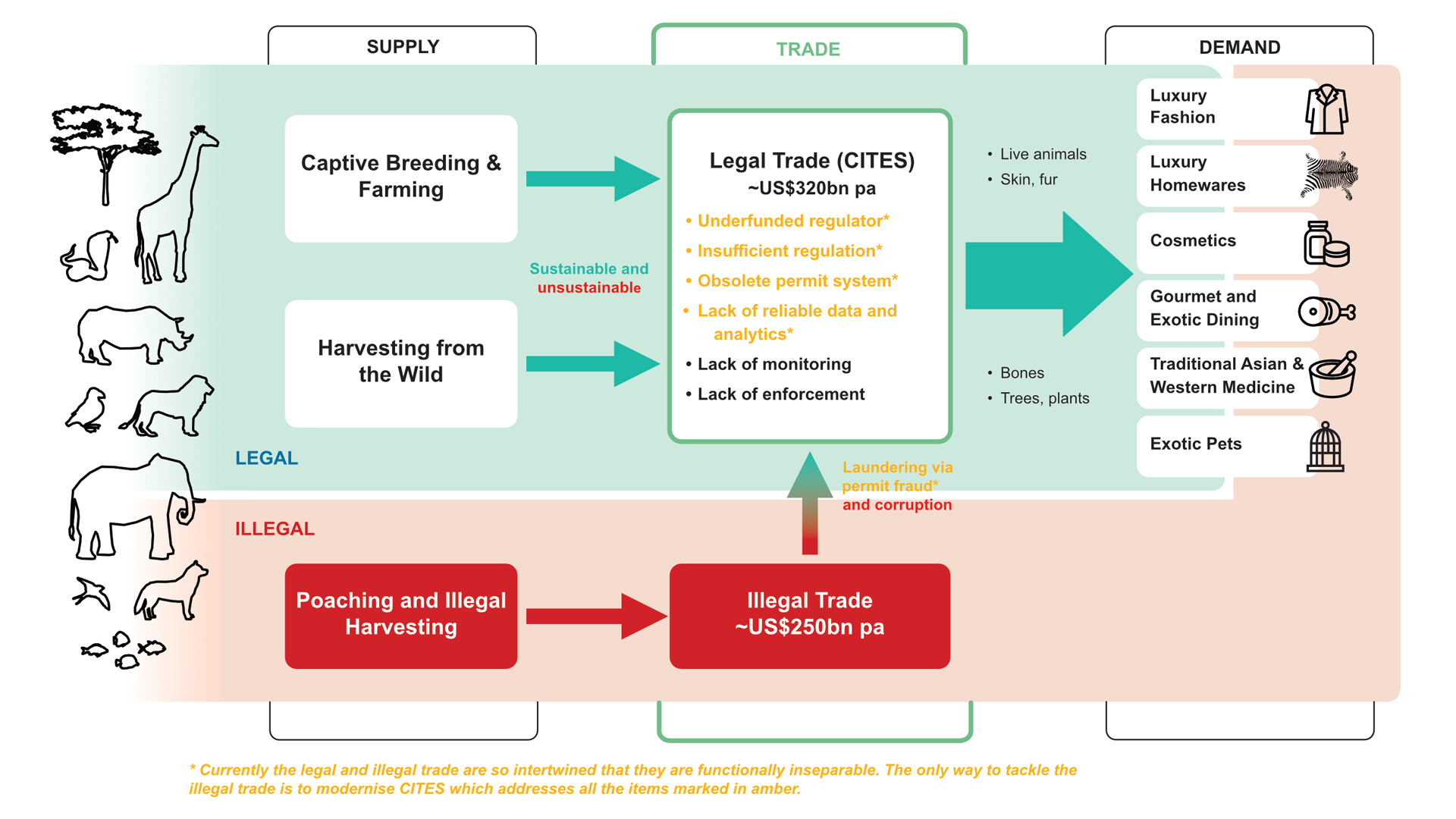
In the last decade there has been an ever-greater push for the resources and legislation to tackle trafficking in wild species. What is almost never acknowledged is there is too big an overlap between transnational organised crime and white-collar/corporate crime.
The lack of supply chain transparency means that the trade and trafficking of wild species are so intertwined that they are functionally inseparable. A 2020 survey of international business confirmed that a substantial 65% of respondents knew or suspected that the third parties they conduct business with may have been involved in a range of illegal, environmentally damaging activities. Only 16% of respondents say that they would report a third-party breach externally, which is why well resourced, mandatory externally regulation is needed.
Business voluntary governance and reporting cannot be relied on when 63% of business respondents agree that the economic climate is encouraging organisations to take regulatory risks in order to win new business. There are just too many conflicts of interest and growing quarterly profits will always win out over investing in the clean-up of supply chains.
The reality is, business is not held responsible for the legality of their supply chains, and the ability to distinguish legal and illegal trade in wild species is not currently possible. Detecting illegal shipments is only a small part of the story.

Voting and the 2/3 majority rule are what have made it possible for CITES to list a lot more species than it otherwise would have been able to. But growing the list of species doesn’t mean more species are protected, other than on paper, because this doesn’t come with a corresponding increase in funding to enact these additional protections.
CITES is a regulator that is impoverished to the point of uselessness.
Only by changing the funding model to one where businesses pay say a 1% levy on value, at the import end of the supply chain, can billions of dollars be generated for monitoring and enforcement of CITES regulations.
In relation to funding, it is also important to note that the main reason that only 117 countries voted on the requiem shark proposal is that the fundraising for sponsored delegates for CoP19 fell well short of the US$1 million needed to allow the attendance of delegates from countries who cannot afford an all-expenses paid 14-day trip to Panama for their public servants.
The disgrace lies in the fact that no money flows to poor countries to implement CITES and to take part in its decision making. It is often philanthropic foundations that are relied upon to pay for delegates from developing countries to attend CITES CoP.
The article also continues the recent coordinated effort to conflate cultural use by Indigenous Peoples and Local Communities (IPLC) with international, commercial trade; they have very little to do with each other.
Cultural trade and commercial trade should not be lumped together as the scale of these two ‘trades’ are vastly different. But it is to the benefit of the stakeholders who want to maintain a business-as-usual approach to create the illusion that restricting commercial trade would impact cultural trade.
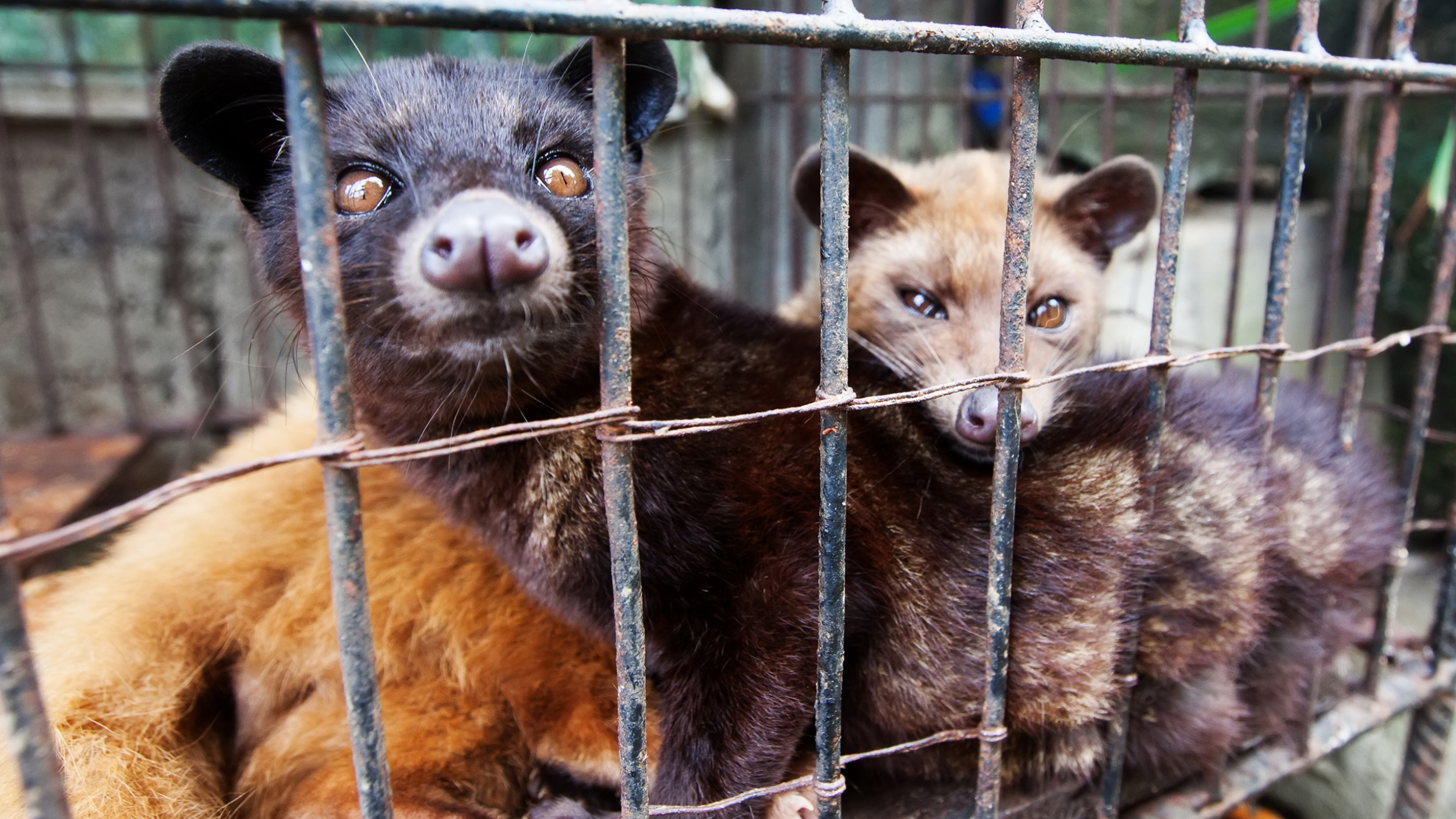
The wildlife trade is at the heart of future pandemic risk; for decades some of the world’s leading scientists have known that humans are vulnerable because the line between us and exotic animals had long been breached for trade purposes. This mean that it is absolutely valid to expect that CITES plays a role in pandemic prevention. Real-time monitoring and supply chain transparency are essential to rapid detection of the root cause of a zoonotic disease outbreak.
The unwillingness to amend the CITES convention shows too many signatory countries are not serious about pandemic prevention; their focus is trade at all costs. CITES is by far the most appropriate treaty to comprehensively regulate the health risks around captive breeding, transport and selling of wild species.
The best way to achieve this is to move the CITES convention to a reverse-listing model, which was first suggested in 1981, at CITES CoP3.
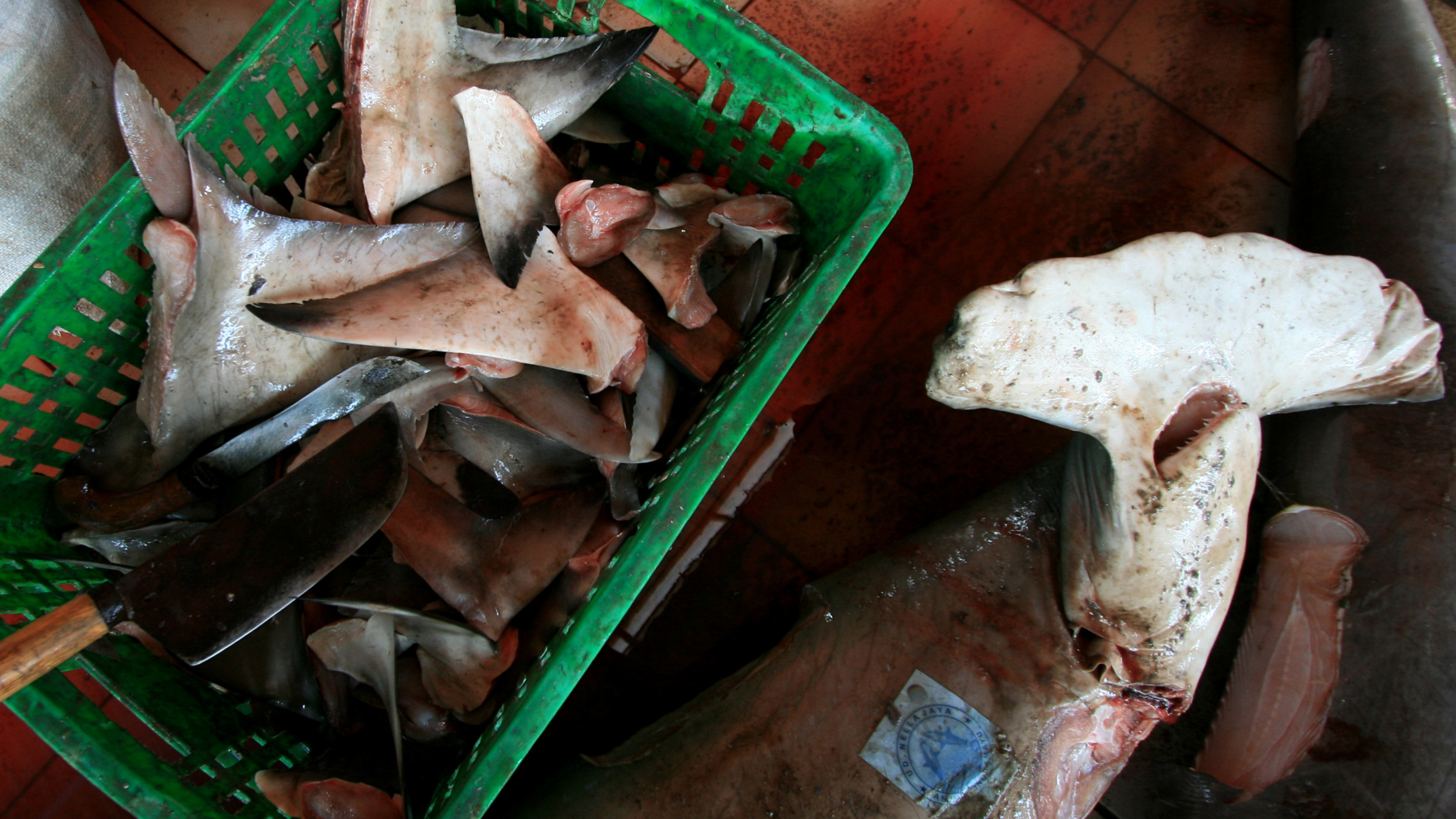
Fishing is the biggest wildlife trade in the world, worth over US$250 Billion in 2019.
As the article acknowledges, CITES has belatedly stepped into listing commercially significant marine species such as sharks and rays. Reporting for Introductions from the Sea is complex, but as mentioned CITES agreed on a viable mechanism in 2013. In practice, parties are not yet reporting according to the required standards. Tracking and transparency are crucial to monitoring fishing and landed catches, which costs money. CITES needs to mandate tracking and transparency for listed sharks and rays in conjunction with the FAO and RFMOs with business to pay the cost of compliance. Only then will we see CITES protections for sharks and rays become meaningful.
Of all the industries that profit from wild species, the fishing industry is undoubtedly the most belligerent and illegal, unreported and unregulated fishing is rampant, with IUU fishing probably representing 20% of the global catch.
Given this industry has shown very little motivation to change, maybe it is only the threat of confiscating the catch of vessels that ‘go dark’ that will finally trigger change.
International Wildlife Trade: Past, Present, and Future
In the coming week leading up to 3 March and World Wildlife Day a number of events are being hosted to commemorate the trade in wildlife species and the CITES.
On 28 February, the ICCF Group is hosting a Congressional Reception: International Wildlife Trade: Past, Present, and Future, on Capitol Hill, commemorating both UN World Wildlife Day and the 50th anniversary of the Convention on International Trade in Endangered Species of Wild Fauna and Flora (CITES), signed in Washington DC on 3 March 1973. Speakers include Martha Williams, Director of the US Fish and Wildlife Service, and John Scanlon, Secretary-General of the CITES from 2010-2018.
But surely this isn’t only a time for commemoration of the International Wildlife Trade: Past, Present, and Future. Only by scrutinising the present can we learn from the past to create the effective, modernised trade management systems for the future.
For CITES to become effective in ensuring that the use, harvesting and trade in wild species is sustainable, safe and legal, as demanded by Target 5 of the Kunming-Montreal Global biodiversity framework, it needs to shine a much brighter light on the supply chains of those businesses that profit from the species listed for CITES trade restrictions.
As the many CITES believers will soon gather in Washington to see in this anniversary, can they provide the evidence that the CITES has been successful? Particularly given conclusions of the landmark 2019 IPBES report into the global extinction crisis, which confirmed that direct exploitation for trade is the most important driver of decline and extinction risk for marine species and the second most important driver for terrestrial and freshwater species.
Will the supporters of CITES use their go to phrase of “Well we know it’s not perfect, but I can’t imagine how much worse it would have been if CITES hadn’t existed?”. While this is hardly a ringing endorsement for CITES, it still simply isn’t enough given the staggering scale of biodiversity loss over CITES’ 50 years. How can CITES supporters justify 50 years of going backwards when we have supposedly lived through decades where the prevailing economic orthodoxy was about progress through trade?
The International Wildlife Trade Future must be about transparency. After all, it’s become common for people to expect companies to be transparent with information. After years of having their personal data owned and handled by businesses, consumer rightly expect companies to reciprocate.
It is not overstating the picture to say that nowhere is this more important than in profiteering from the consumption of wildlife. The trade in wild species is one of the most lucrative trades in the world and there needs to be genuine proof that this trade is legal, sustainable and safe.

